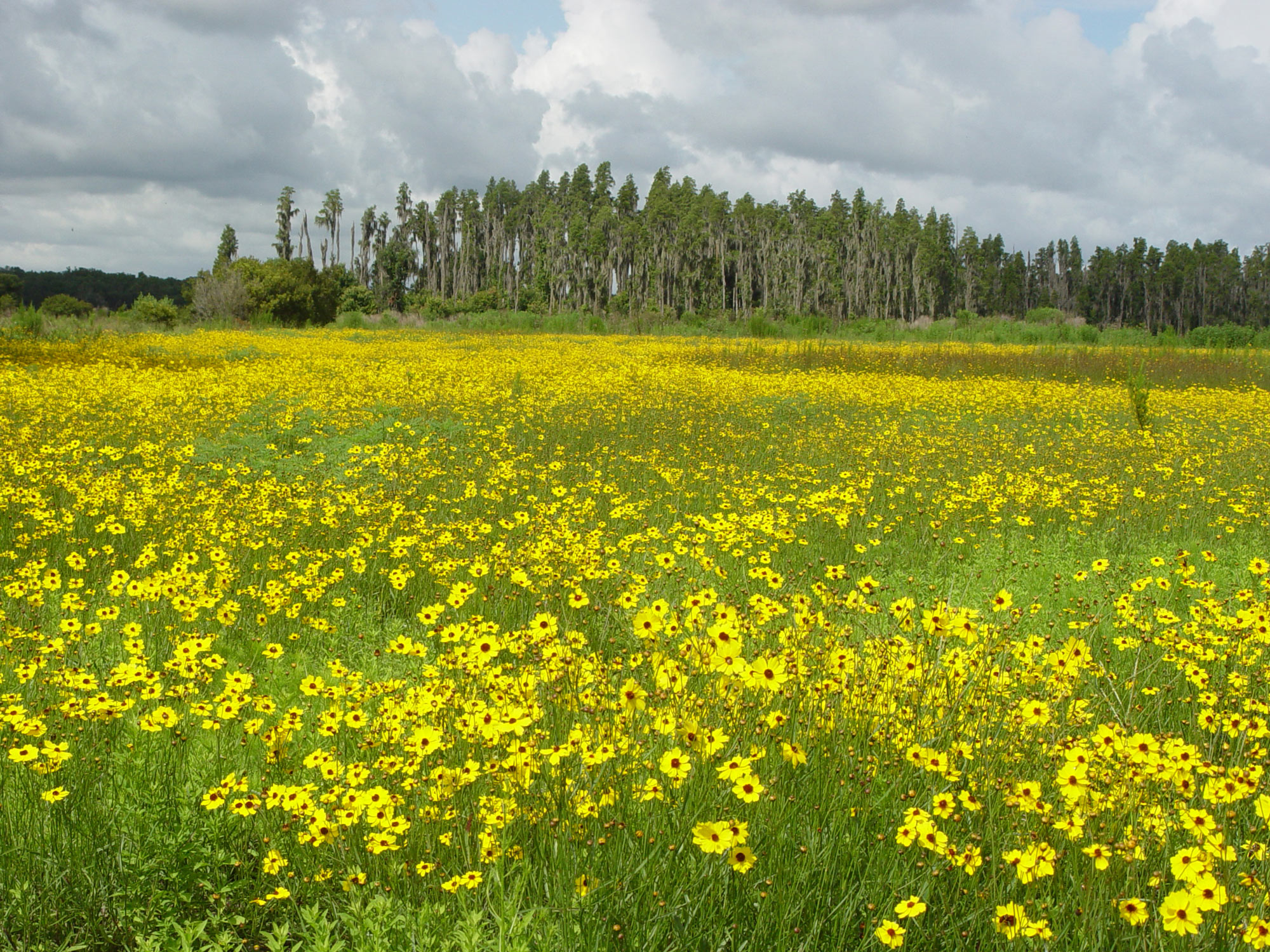Florida native plants for sustainable landscapes.
Visit PlantRealFlorida.org
 Central Florida restoration area featuring field of coreopsis with cypress dome at rear. Photo by The Natives.
Central Florida restoration area featuring field of coreopsis with cypress dome at rear. Photo by The Natives.A fundamental selling point for native plants is that they are naturally adapted to the place they occur – the soils, climate, natural water regime (not sprinkler systems), and surrounding plants, animals, insects and other organisms. This natural adaptation makes native plants reliable choices for the landscape. But it’s still important to ask about plant origin and expected performance on the site you’ll be planting.
Many species native to Florida also occur well outside our state. Red maple (Acer rubrum) trees, for example, range across much of the Eastern United States. Growers have long recognized the importance of local maple stock. Native Florida red maples provide better seasonal color (if not on the same “schedule” that northeners might expect) and generally perform better than northern red maples. Florida’s extreme humidity and longer sunny days and seasons are obvious conditions that affect plants. Florida natives, naturally adapted to high humidity, tend to be less susceptible to fungus problems associated with species from out of state. And in sunny Florida, northern trees that leaf out later and drop leaves earlier won’t do as well as natives.
Adaptability and peformance concerns are not limited to species that naturally range outside the state. Hang around ecologically inclined horticulturists long enough and you’ll hear the words “ecotype” and “provenance,” and for good reason. “Provenance” refers to the place where a plant originated. “Ecotype” refers to a genetically unique population of plants adapted to a local environment – and “local” could be a region of Florida or even a particular habitat in your county. Experience has shown that for many plants, “local matters” when it comes to foliage, flowering, seed set, seed germination, and overall plant performance.
Scientists are concerned that introducing plants from one ecotype to another can result in hybridization and the loss of the original genetic diversity that make specific local populations successful in their particular environments. The extensive planting of non-native plants in our landscapes has already contributed to this problem. In big box garden centers, the provenance of the plants is rarely known. And unless “native Florida ecotype” is specified, commercially available seed packets typically contain seed collected from plants that originate from outside the state.
Responsible nurseries will tell customers where their plants come from, and many native nurseries specialize in growing plants from locally collected seed. Adaptability varies greatly in species and precise definitions for “local” are probably not practical. General suggestions for plants have ranged from 60 to 100-200 miles from the point of origin, and this distance is often used by public agencies and conservation organizations engaged in restoration efforts, where there is a high degree of concern for preserving genetically adapted biodiversity.
As a professional, you can do your part by growing and planting native, and whenever possible, buying plants grown from local seed stock. Always ask about the origin, natural range, and expected performance of the plants you buy. If you’re reselling to the public, use your local source as a product benefit and marketing advantage.